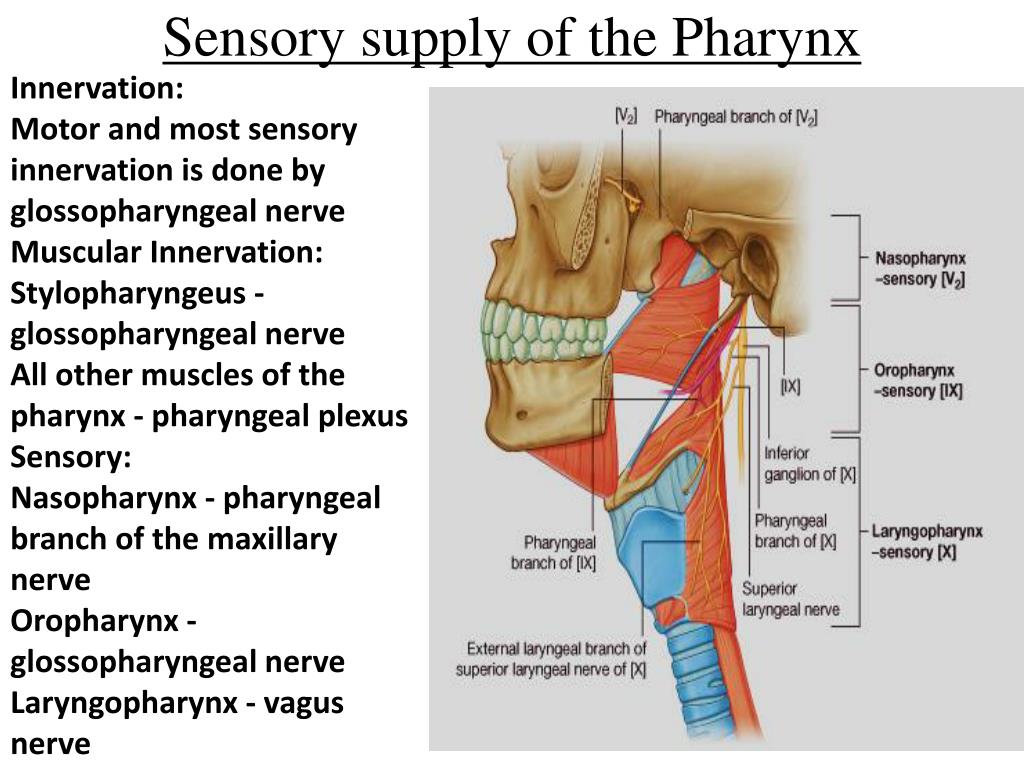

Fibers cross over to and join the vagus nerve in the jugular foramen. The somatic motor fibers that innervate the laryngeal muscles, and pharyngeal muscles are located in the nucleus ambiguus and emerge from the medulla in the cranial root of the accessory nerve.

The left RLN is longer than the right, because it crosses under the arch of the aorta at the ligamentum arteriosum. Unlike the other nerves supplying the larynx, the right and left RLNs lack bilateral symmetry.

The terminal branch is called the inferior laryngeal nerve. : 1346–1347 They then pass behind the posterior, middle part of the outer lobes of the thyroid gland and enter the larynx underneath the inferior constrictor muscle, : 918 passing into the larynx just posterior to the cricothyroid joint. After branching, the nerves typically ascend in a groove at the junction of the trachea and esophagus. The left RLN passes in front of the arch, and then wraps underneath and behind it. The recurrent laryngeal nerves branch off the vagus, the left at the aortic arch, and the right at the right subclavian artery. The vagus nerves, from which the recurrent laryngeal nerves branch, exit the skull at the jugular foramen and travel within the carotid sheath alongside the carotid arteries through the neck. The vagus nerves run down into the thorax, and the recurrent laryngeal nerves run up to the larynx. The recurrent laryngeal nerves branch from the vagus nerve, relative to which they get their names the term "recurrent" from Latin: re- (back) and currere (to run), indicates they run in the opposite direction to the vagus nerves from which they branch. Structure Passing under the subclavian artery, the right recurrent laryngeal nerve has a much shorter course than the left which passes under the aortic arch and ligamentum arteriosum. The existence of the recurrent laryngeal nerve was first documented by the physician Galen. The recurrent laryngeal nerves are the nerves of the sixth pharyngeal arch. The posterior cricoarytenoid muscles, the only muscles that can open the vocal folds, are innervated by this nerve. The recurrent laryngeal nerves supply sensation to the larynx below the vocal cords, give cardiac branches to the deep cardiac plexus, and branch to the trachea, esophagus and the inferior constrictor muscles. Additionally, the nerves are among the few nerves that follow a recurrent course, moving in the opposite direction to the nerve they branch from, a fact from which they gain their name. The right and left nerves are not symmetrical, with the left nerve looping under the aortic arch, and the right nerve looping under the right subclavian artery then traveling upwards. There are two recurrent laryngeal nerves, right and left. The recurrent laryngeal nerve ( RLN) is a branch of the vagus nerve ( cranial nerve X) that supplies all the intrinsic muscles of the larynx, with the exception of the cricothyroid muscles.


 0 kommentar(er)
0 kommentar(er)
